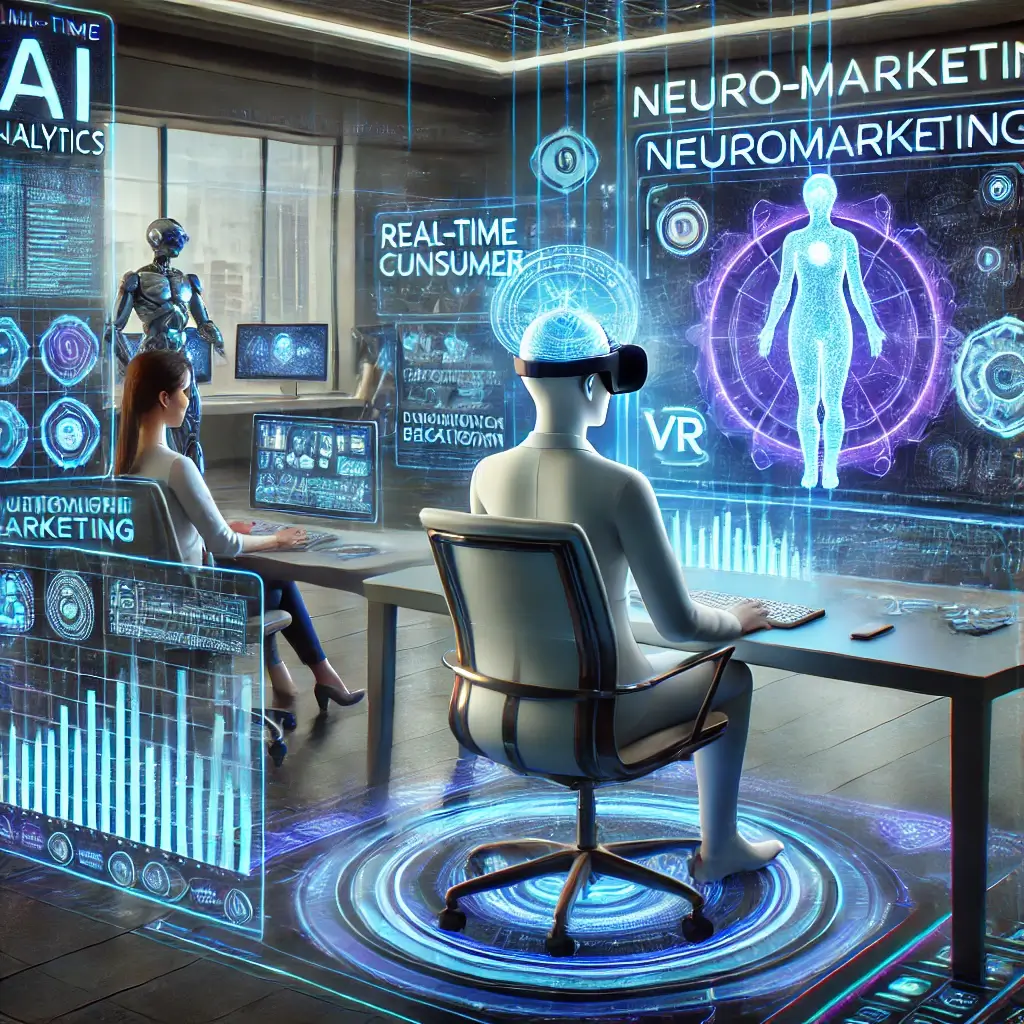The Transformative Power of Neuromarketing in the Digital Landscape
The world of digital marketing is experiencing a significant transformation as neuromarketing continues to gain traction. Neuromarketing, an innovative blend of neuroscience and marketing, explores the deep-seated psychological triggers that drive consumer behavior. By tapping into the subconscious mind, marketers can design campaigns that are not only engaging but also strategically precise.
AI Integration Revolutionizes Consumer Interactions in 2025
As we move further into 2025, the integration of artificial intelligence (AI) with neuromarketing techniques is reshaping how brands interact with their audiences. AI-driven insights now allow marketers to predict consumer preferences, adapt content dynamically, and deliver hyper-personalized experiences. These advancements make neuromarketing an indispensable tool for organizations looking to stay ahead in the competitive digital landscape.
Emerging Trends for Strategic Marketing Innovation
This article explores emerging trends in neuromarketing, highlighting how brands can use these insights to innovate their campaigns. From leveraging real-time behavioral data to adopting immersive technologies, the focus is on equipping marketers with actionable strategies to succeed in a rapidly evolving market.
Harnessing the Power of Real-Time Consumer Data Analysis
One of the most exciting applications of neuromarketing is real-time behavioral analysis. AI-powered tools can now monitor and interpret user behavior as it happens, offering immediate insights into engagement patterns. This real-time feedback allows marketers to fine-tune their campaigns for maximum impact.
Success Stories: Converting Data into Dramatic Sales Growth
Example: A global fashion retailer used AI to analyze real-time user interactions during a new product launch. By identifying trends in user clicks and browsing behavior, they optimized their product placement on the website, leading to a 30% increase in sales within 48 hours.
Agile Marketing Strategies for Dynamic Market Conditions
The ability to pivot campaigns based on live data is particularly valuable in industries with fluctuating trends, such as fashion, entertainment, and technology.
Virtual and Augmented Reality Transform Customer Experiences
Virtual reality (VR) and augmented reality (AR) are revolutionizing consumer experiences. These technologies, powered by neuromarketing insights, create immersive environments that captivate users and evoke strong emotional responses.
Case Study: Innovative AR Application Drives Conversion Success
Case Study: A car manufacturer developed an AR app allowing potential buyers to visualize their custom vehicles in real-world settings. This not only enhanced user engagement but also increased conversion rates by 40%. Such immersive experiences deepen brand interaction, leaving lasting impressions on consumers.
The Evolution of AI-Powered Emotional Intelligence in Marketing
AI tools are increasingly adept at analyzing emotional cues in consumer interactions. From tone analysis in social media comments to facial expression tracking in video ads, marketers can tailor their campaigns to evoke specific emotions.
Anticipating the Next Wave of Emotional Analytics
Future Outlook: As AI continues to evolve, it will become possible to analyze group-level emotional trends, enabling brands to target their campaigns more effectively during key cultural or seasonal events. This approach ensures a deeper emotional connection with audiences, fostering loyalty and advocacy.
The Science of Beauty: Using Visual Design to Captivate Consumers
Neuroaesthetics, the study of how visual aesthetics influence human emotion and cognition, is a growing field in neuromarketing. Marketers can use this knowledge to design visually appealing campaigns that naturally draw the eye and evoke positive emotions.
Neuroaesthetics Delivers Measurable ROI for Luxury Brands
Example: A luxury hotel chain revamped its website using principles of neuroaesthetics, incorporating warm color schemes and symmetrical layouts. The redesign resulted in a 25% increase in booking rates, demonstrating the power of aesthetically driven engagement.
Balancing Consumer Influence with Ethical Responsibility
With great power comes great responsibility. As neuromarketing techniques become more advanced, the ethical implications of influencing consumer behavior cannot be ignored. Transparency and consumer consent are critical to maintaining trust.
Ethics in Practice: Cautionary Tales from the Tech Industry
Case in Point: A major tech company implemented neuromarketing principles in its app design but faced backlash for manipulating user preferences without clear disclosure. This highlights the importance of ethical practices in maintaining brand integrity.
The Future Landscape of Neuromarketing-Driven Campaigns
Neuromarketing is redefining the boundaries of digital marketing. By leveraging real-time behavioral data, embracing immersive technologies, and integrating emotional analytics, brands can create campaigns that resonate on a profound level. However, as these techniques become more sophisticated, maintaining ethical standards will be vital.
Preparing for Success in the Age of AI-Enhanced Marketing
As AI continues to drive innovation in neuromarketing, marketers must remain agile and informed to harness its full potential. The future of digital marketing lies at the intersection of science, creativity, and ethics, making neuromarketing a cornerstone for success in 2025 and beyond.
Industry Insights and Further Reading
References
Nielsen. “The Impact of Emotional Advertising on ROI.” Published 2024. Link.
Gartner. “Neuromarketing Insights for Enhanced UX.” Published 2023. Link.
Journal of Consumer Research. “Neuroaesthetics in Marketing.” Published 2024. Link.
